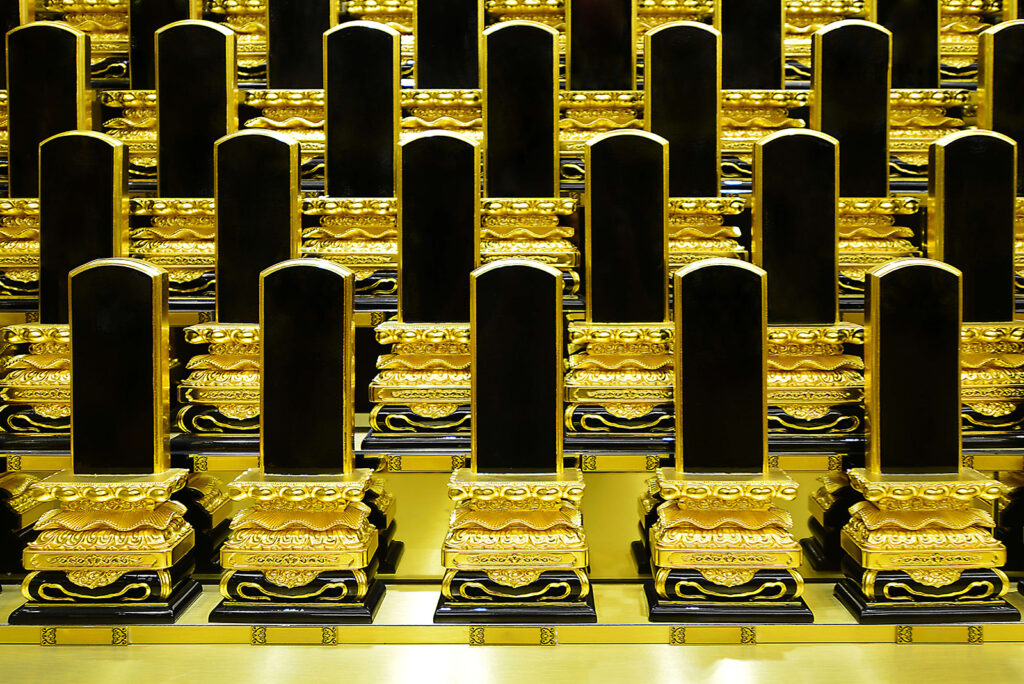Chinese traditionally use ancestral tablets to complement other funeral paraphernalia for ancestor worship. They use them in addition to the gravestone and columbarium niche.
Chinese pay their respects to the dead throughout the year, so they keep them at temples and shrines. They are popular wherever you find sizable East Asian Buddhist populations, including Singapore, Malaysia, China, Korea, Japan and Taiwan.

Empty luxury ancestral tablets.
Preparation of Ancestral Tablets
Depending on the local tradition and customs the preparation of ancestral tablets can vary greatly in size and shape. Consisting of two pieces made from wood and/or natural stone, with precious metals used for inscriptions.
Traditionally, the tablets are inscribed with the name of the deceased. However, modern tablets often include other items, including:
- Photos,
- Maiden name of the spouse,
- Date of death and
- Farewell message written by someone close to the deceased describing how the deceased was like and his/her contributions.
A special ceremony accompanies the creation of the inscriptions, which they later burn or bury with the dead. Alternatively, they are kept in special compartments that are usually located at back of the tablet or the bottom of the stand. At the end of the funeral, families bring the ancestral tablets back to the family home and housed in the household shrine.
Tracing back family roots.
All this information is a treasure trove of genealogical information and is invaluable for relatives who are trying to trace their ancestral roots.
Ancestral tablets contain the correct Chinese characters of a person’s name, complete with the person’s place of birth (the name of the village and province in China), the names of the person’s children and grandchildren, and sometimes even the name of the dynasty or emperor at time of death.
________________
Nirvana funeral services promises to give your loved ones the best departing gift possible. Contact us for more information.
________________

